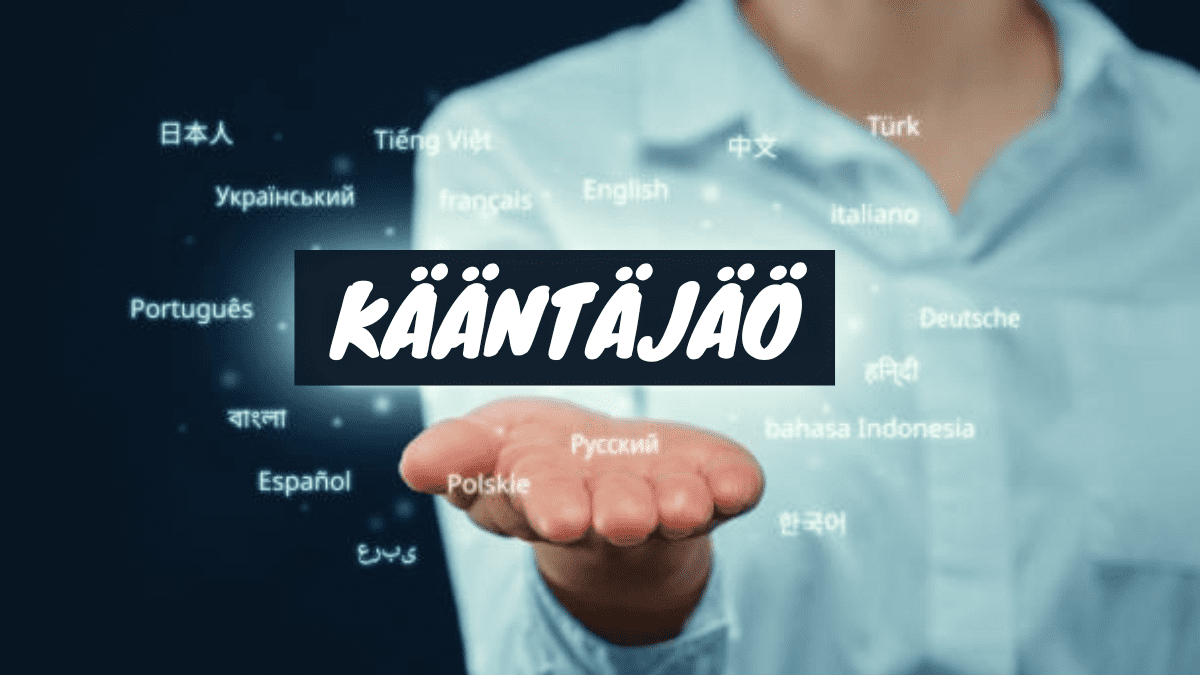
Kääntäjäö: The Art and Science of Translation in Finnish
Kääntäjäö is the process of translating text, speech, or other forms of communication from one language to another. It is an essential skill in today's globalized world, enabling communication, understanding, and the exchange of ideas across linguistic and cultural boundaries.
The History of Kääntäjäö
The practice of Kääntäjäö has been around for centuries, with early examples dating back to ancient civilizations. As trade, exploration, and cultural exchange increased over time, the need for skilled translators and interpreters became increasingly important.
The Importance of Kääntäjäö in the Modern World
In the 21st century, Kääntäjäö has become more crucial than ever. With the rapid growth of international business, the internet, and global communication, the demand for accurate and effective translation services has skyrocketed. Kääntäjäö plays a vital role in:
- Facilitating international trade and commerce
- Enabling cross-cultural understanding and collaboration
- Providing access to information and resources in different languages
- Preserving cultural heritage and diversity
- Ensuring effective communication in legal, medical, and other critical domains
The Principles of Effective Kääntäjäö
Successful Kääntäjäö involves a deep understanding of both the source and target languages, as well as the cultural contexts in which they are used. Effective Kääntäjäö practitioners adhere to the following principles:
- Accuracy: Ensuring that the translated text or speech accurately conveys the original meaning and nuance.
- Fluency: Producing a natural, idiomatic translation that reads or sounds like it was originally written in the target language.
- Cultural Awareness: Recognizing and adapting to the cultural differences between the source and target languages.
- Ethical Conduct: Maintaining strict confidentiality, impartiality, and professional integrity when handling sensitive or confidential information.
The Different Types of Kääntäjäö
Kääntäjäö can be divided into several distinct categories, each with its own unique challenges and requirements:
- Written Translation: The conversion of written text from one language to another, often for documents, websites, or publications.
- Interpretation: The oral translation of spoken language, often in real-time during meetings, conferences, or other events.
- Localization: The adaptation of products, software, or content to the linguistic and cultural norms of a specific market or region.
- Transcreation: The creative translation of marketing, advertising, or creative content, where the focus is on preserving the intended meaning and impact rather than literal translation.
The Skills and Qualifications of a Kääntäjäö Professional
Becoming a skilled Kääntäjäö professional requires a combination of linguistic expertise, cultural knowledge, and specialized training. Key skills and qualifications include:
- Fluency in multiple languages, including a deep understanding of grammar, syntax, and vocabulary
- Strong research and problem-solving abilities to handle complex or technical translations
- Excellent written and oral communication skills
- Cultural sensitivity and the ability to adapt content for different audiences
- Specialized training or certification in translation, interpretation, or localization
- Continuous professional development to stay up-to-date with industry trends and best practices
The Challenges of Kääntäjäö
While Kääntäjäö is a vital skill, it is not without its challenges. Some of the key challenges faced by Kääntäjäö professionals include:
- Idiomatic and colloquial language: Translating expressions, idioms, and culturally-specific references can be particularly challenging.
- Technical and specialized terminology: Accurately translating complex or highly technical content requires in-depth subject matter expertise.
- Time constraints and deadlines: Kääntäjäö professionals often work under tight deadlines, particularly in fields like interpretation or localization.
- Ethical considerations: Maintaining confidentiality and impartiality when handling sensitive or confidential information.
- Technological advancements: The rapid development of machine translation and other AI-powered translation tools is both an opportunity and a challenge for Kääntäjäö professionals.
The Future of Kääntäjäö
As the world becomes increasingly interconnected, the demand for skilled Kääntäjäö professionals is only expected to grow. The future of Kääntäjäö will likely be shaped by the following trends:
- Continued advances in machine translation and other AI-powered translation tools, which will both complement and challenge human translators.
- Increased specialization and the need for Kääntäjäö professionals with deep subject matter expertise in fields like medicine, law, or technology.
- The growing importance of cultural adaptation and transcreation, as companies and organizations seek to reach global audiences more effectively.
- The rise of remote and freelance Kääntäjäö work, enabled by advances in communication and collaboration technologies.
Conclusion
Kääntäjäö is a vital skill that plays a critical role in today's globalized world. Whether it's facilitating international commerce, preserving cultural heritage, or enabling cross-cultural understanding, the art of Kääntäjäö remains an essential and ever-evolving field. As technology and global interconnectivity continue to advance, the demand for skilled Kääntäjäö professionals will only increase, making it a rewarding and in-demand career path for those with the necessary linguistic, cultural, and technical expertise.
